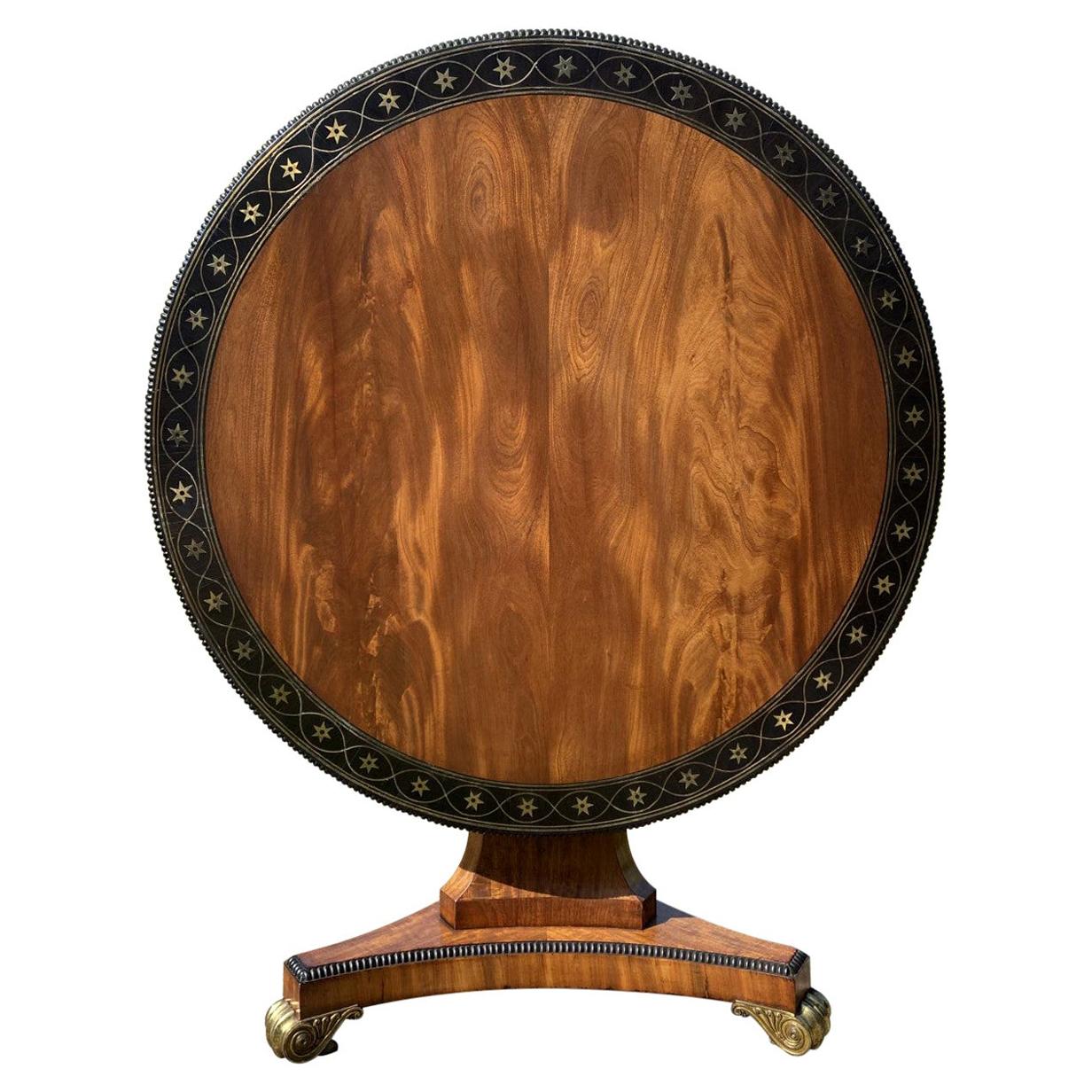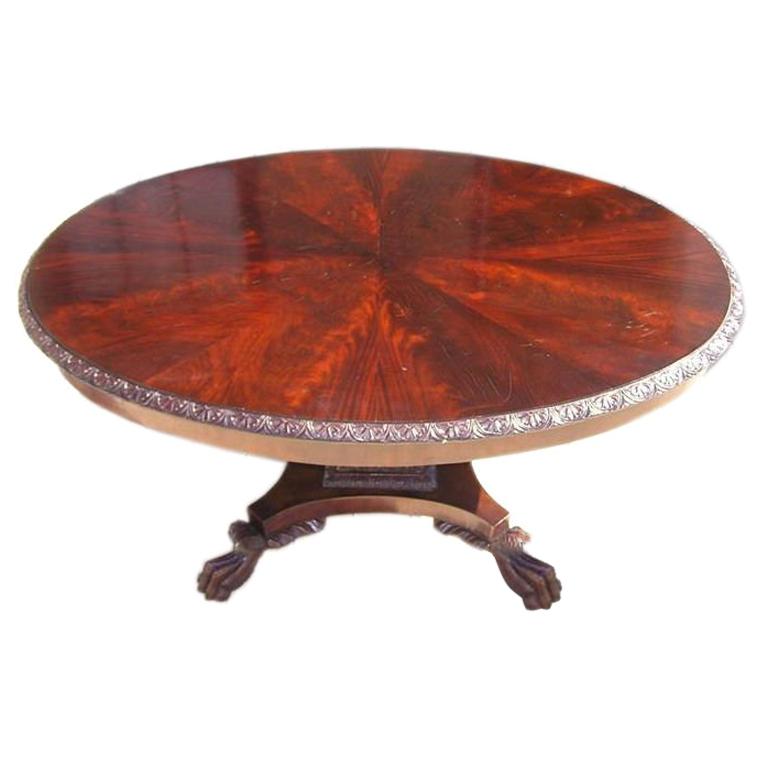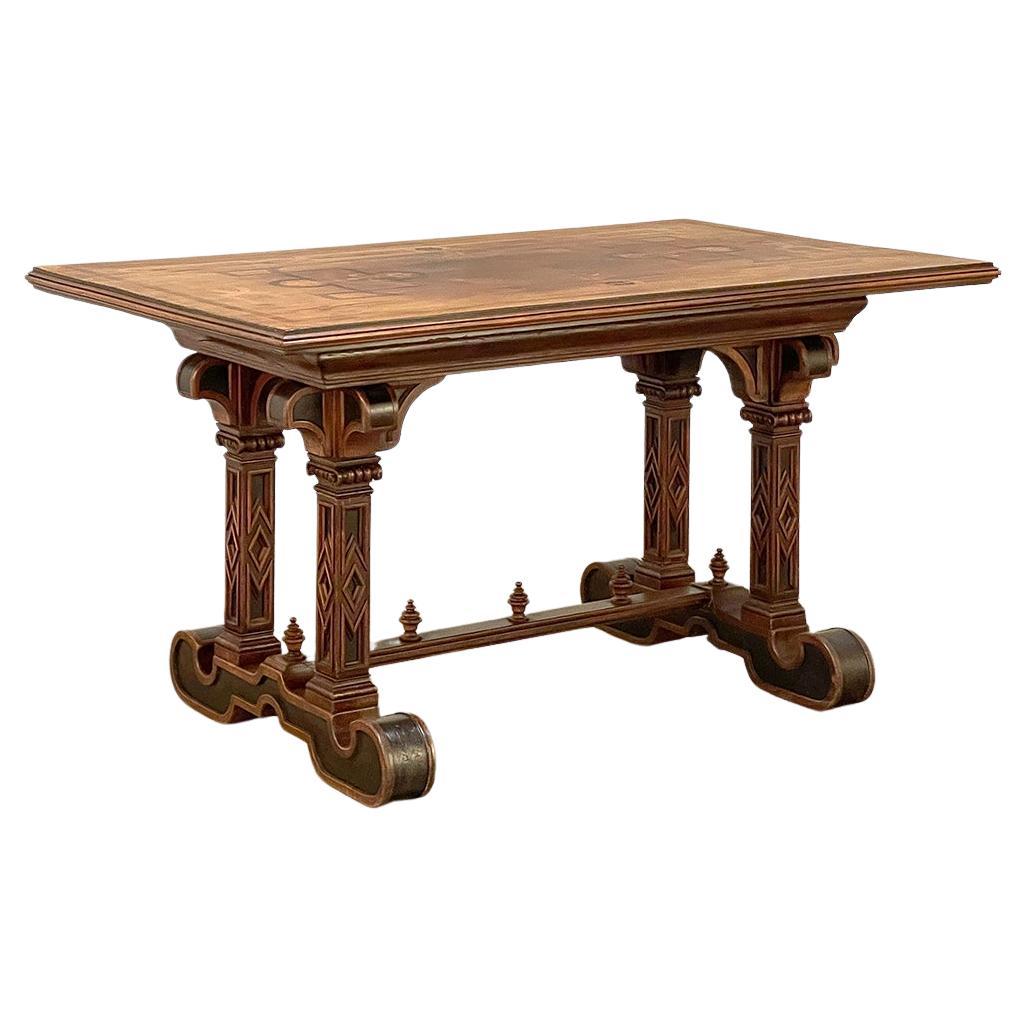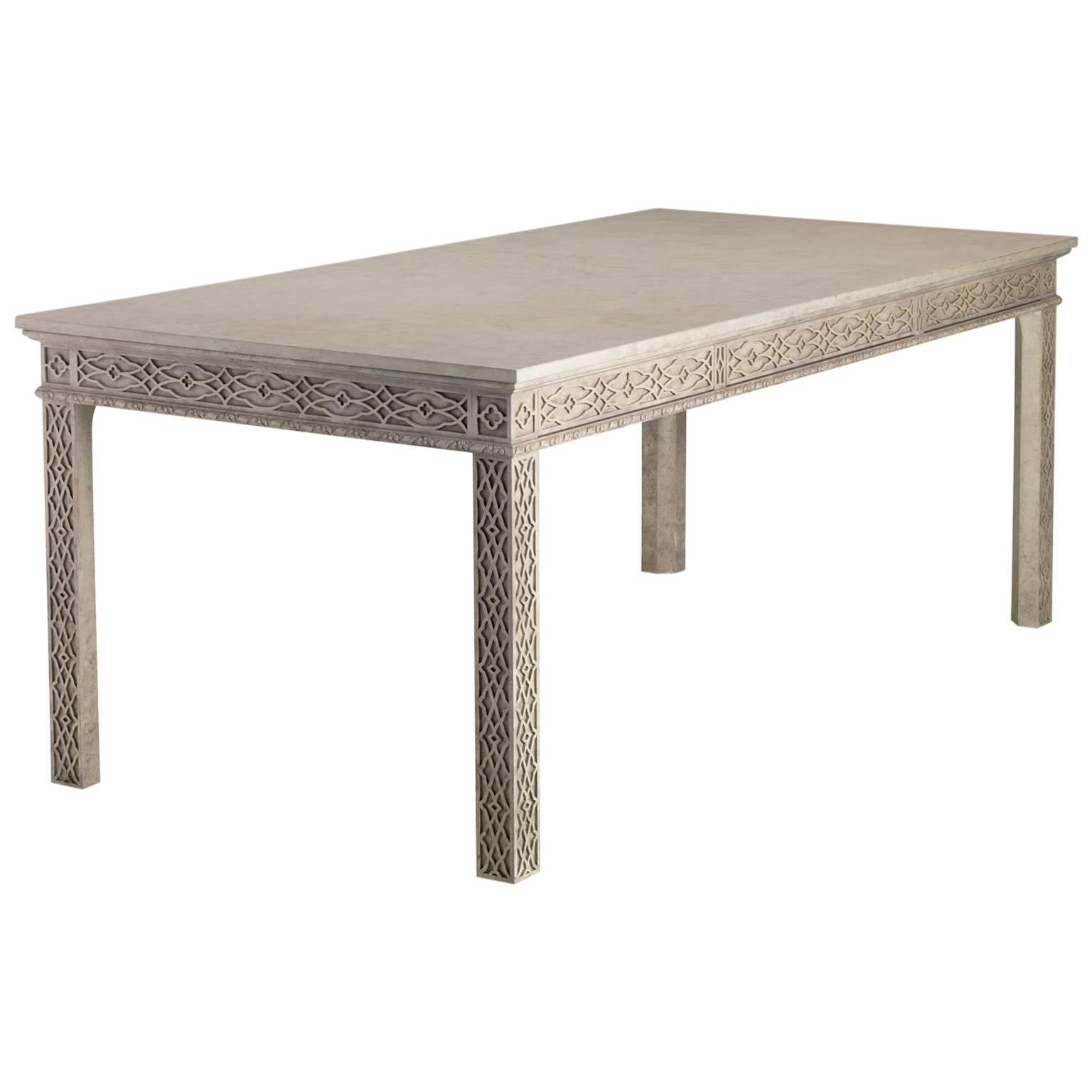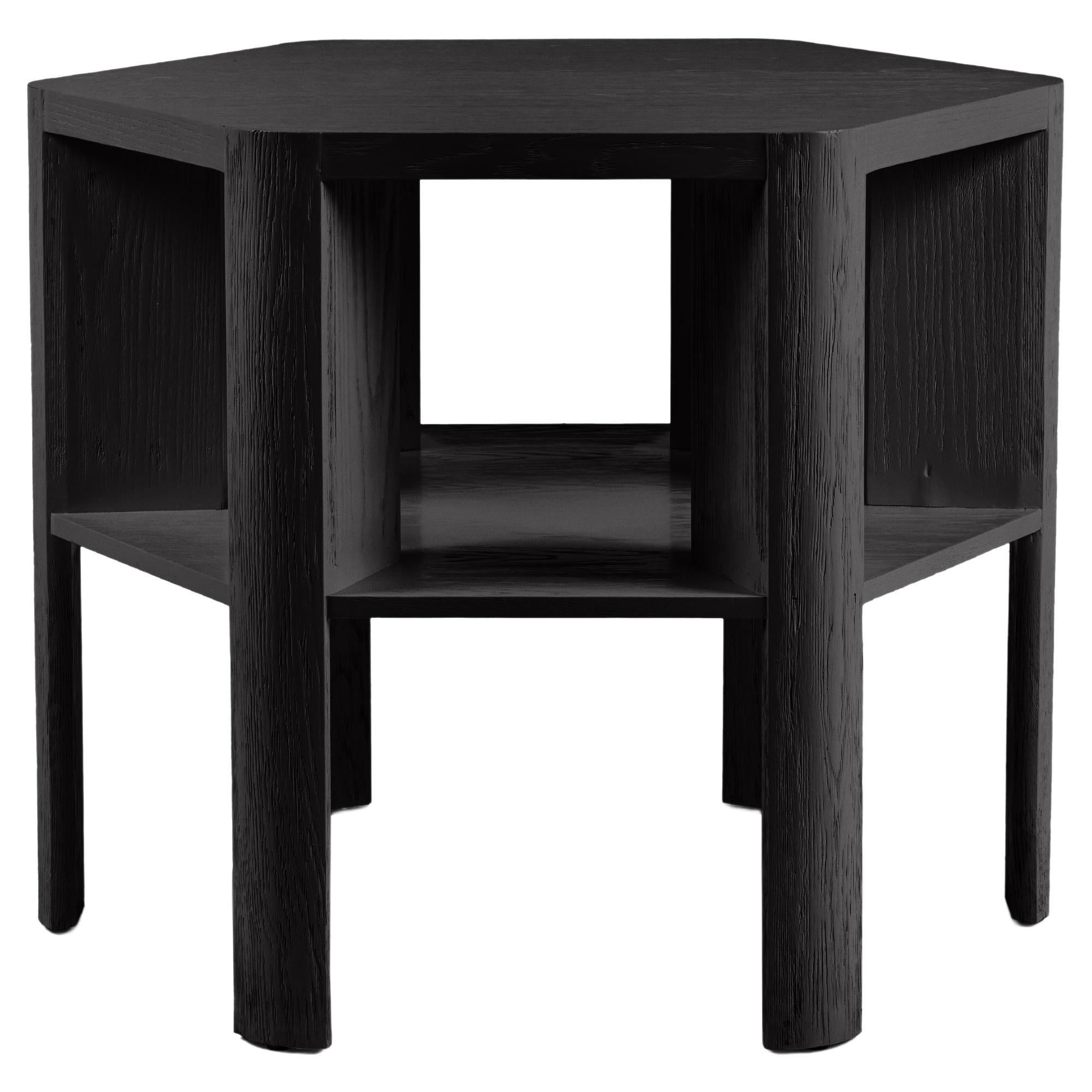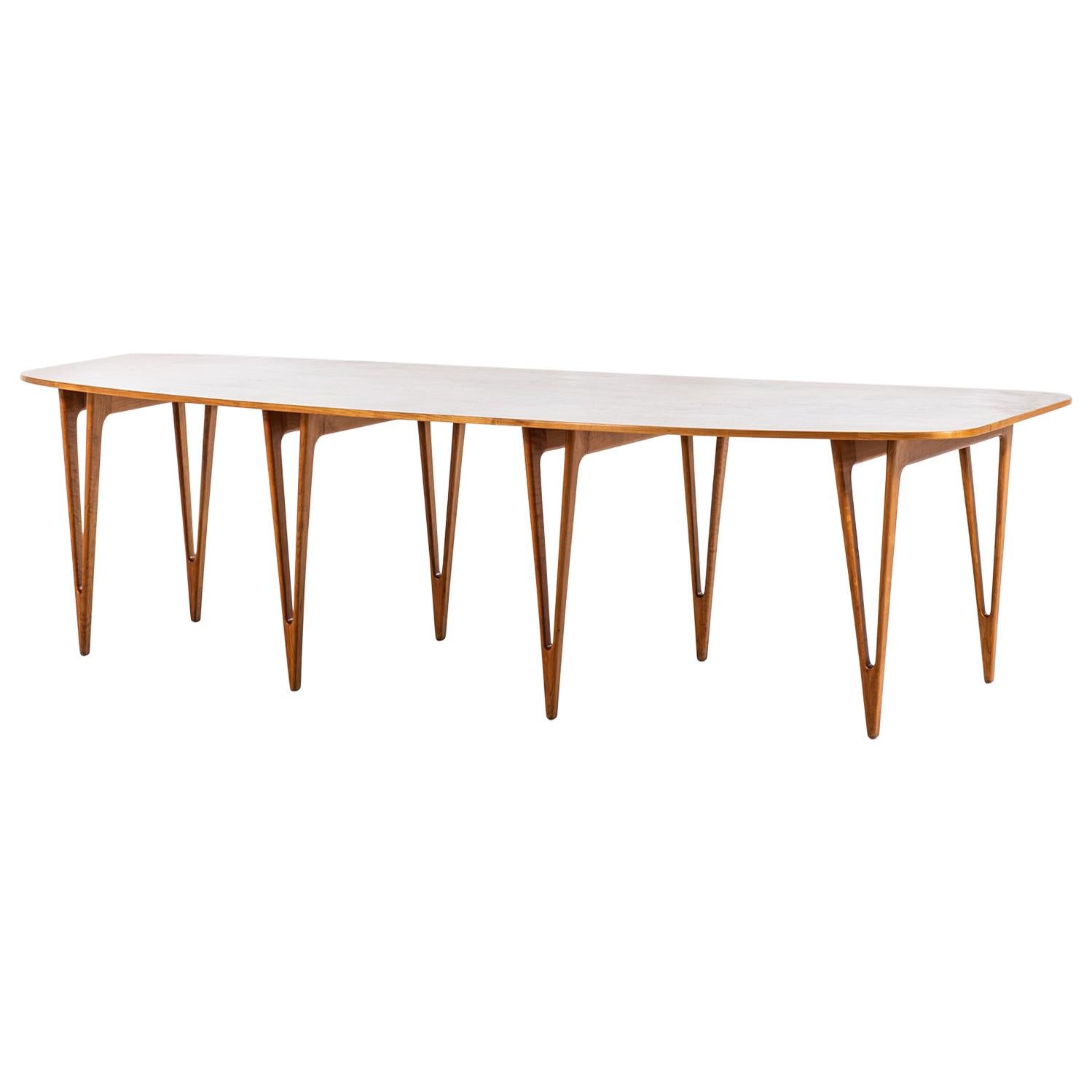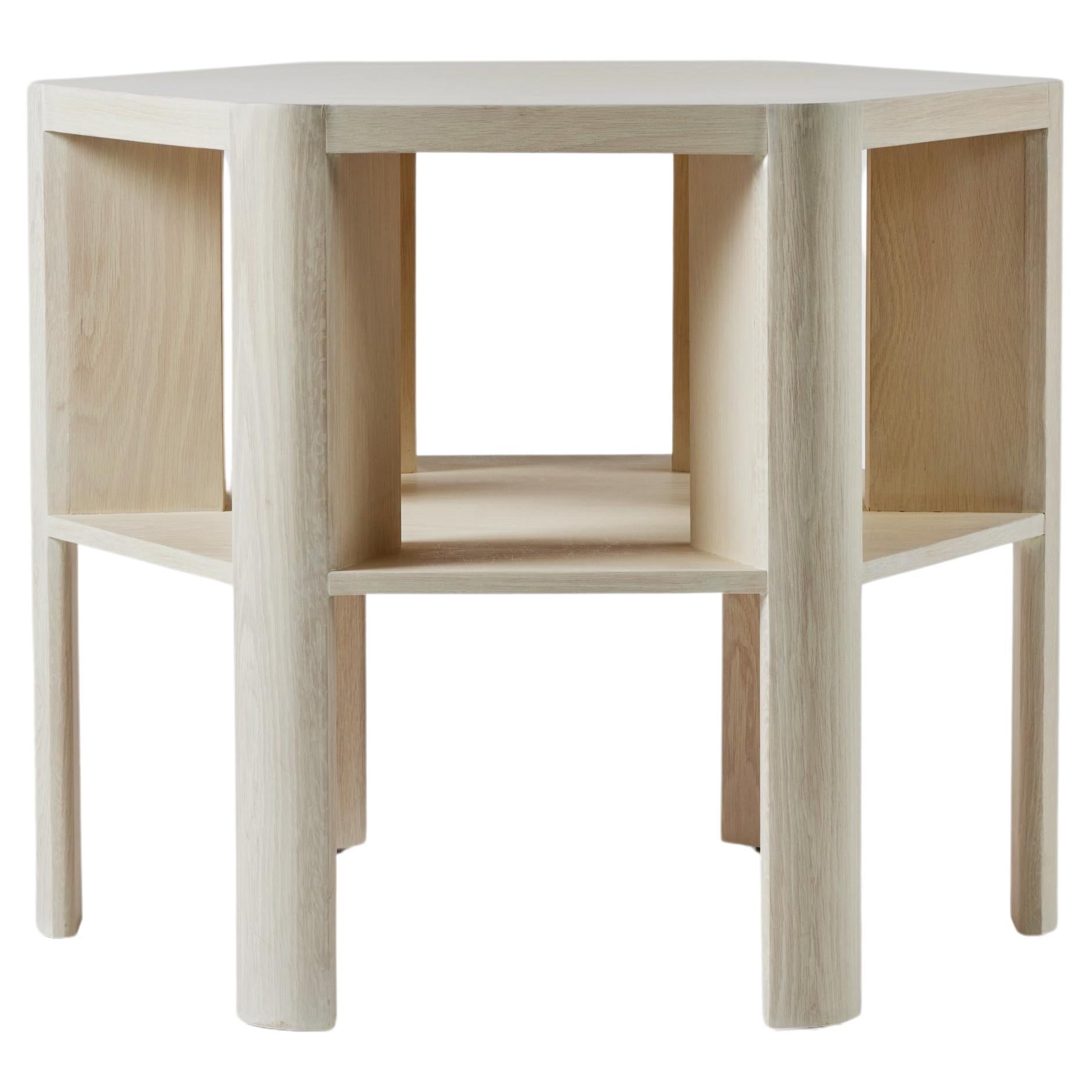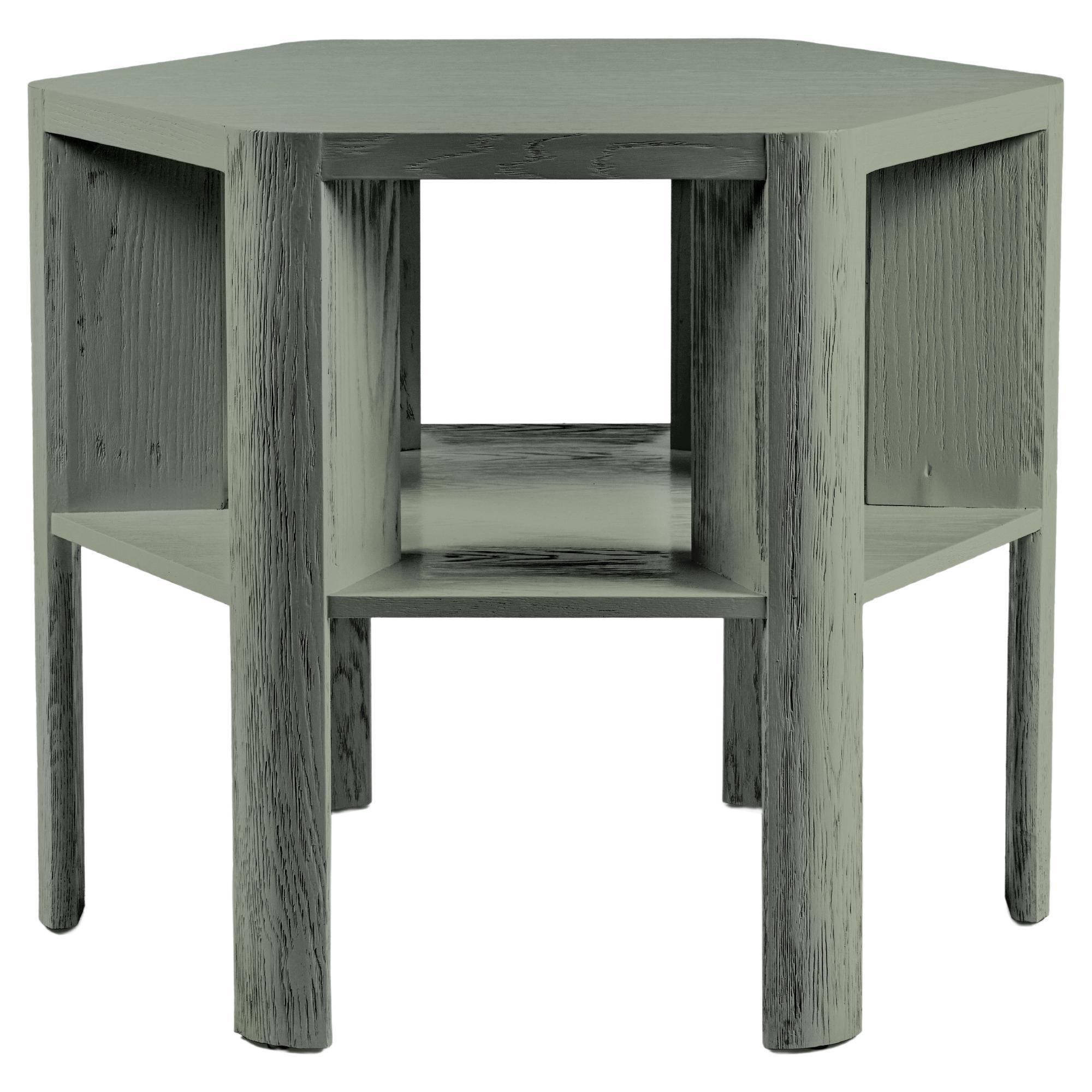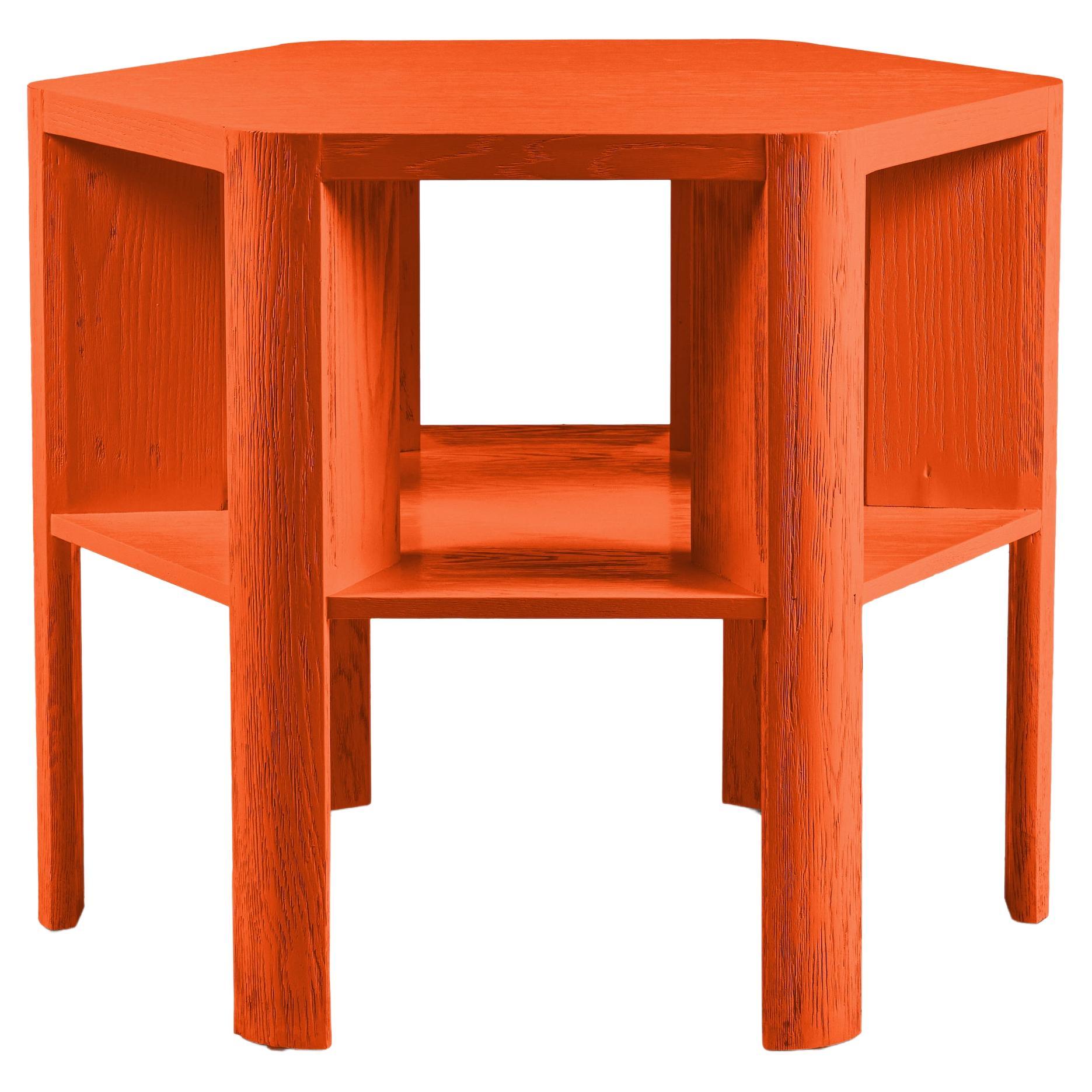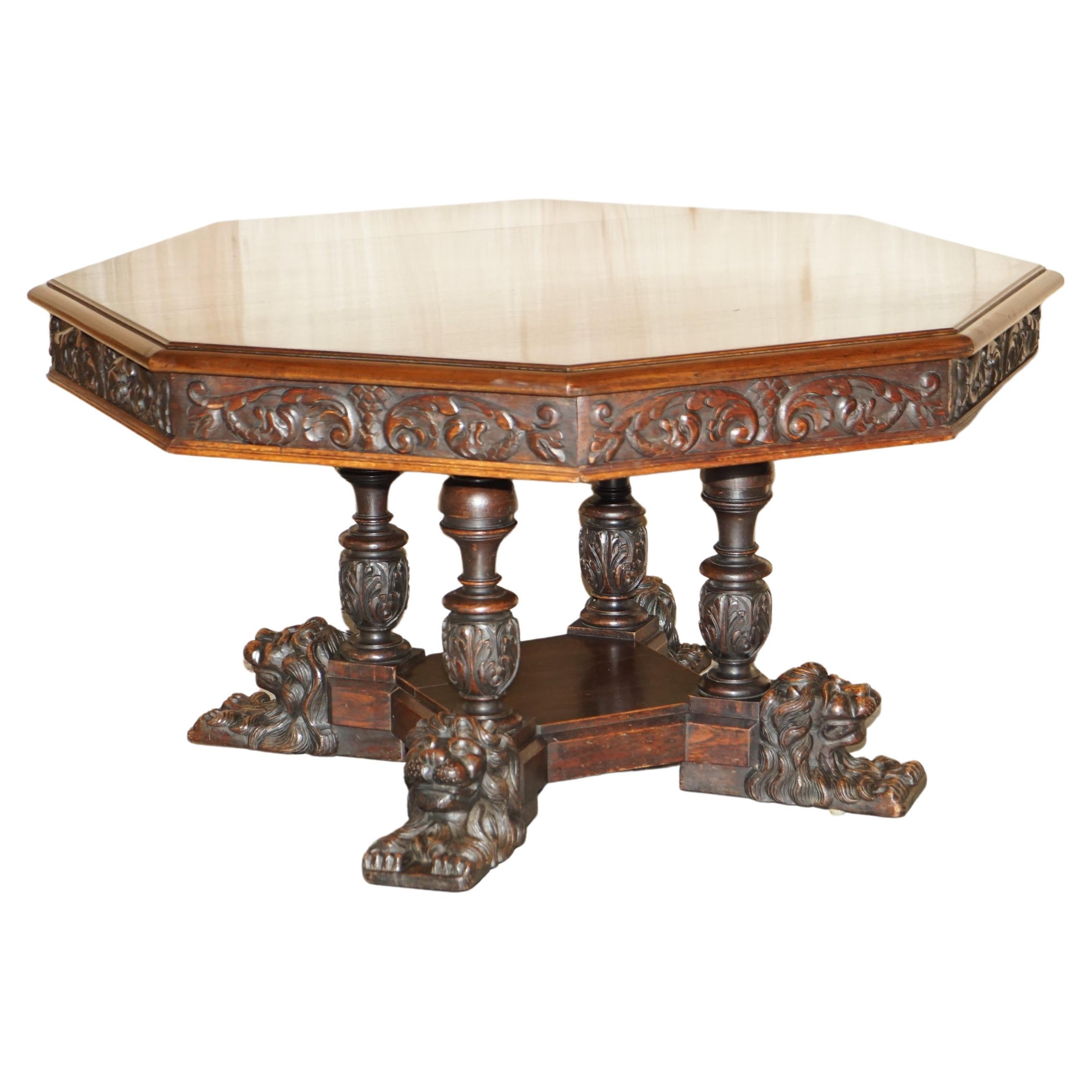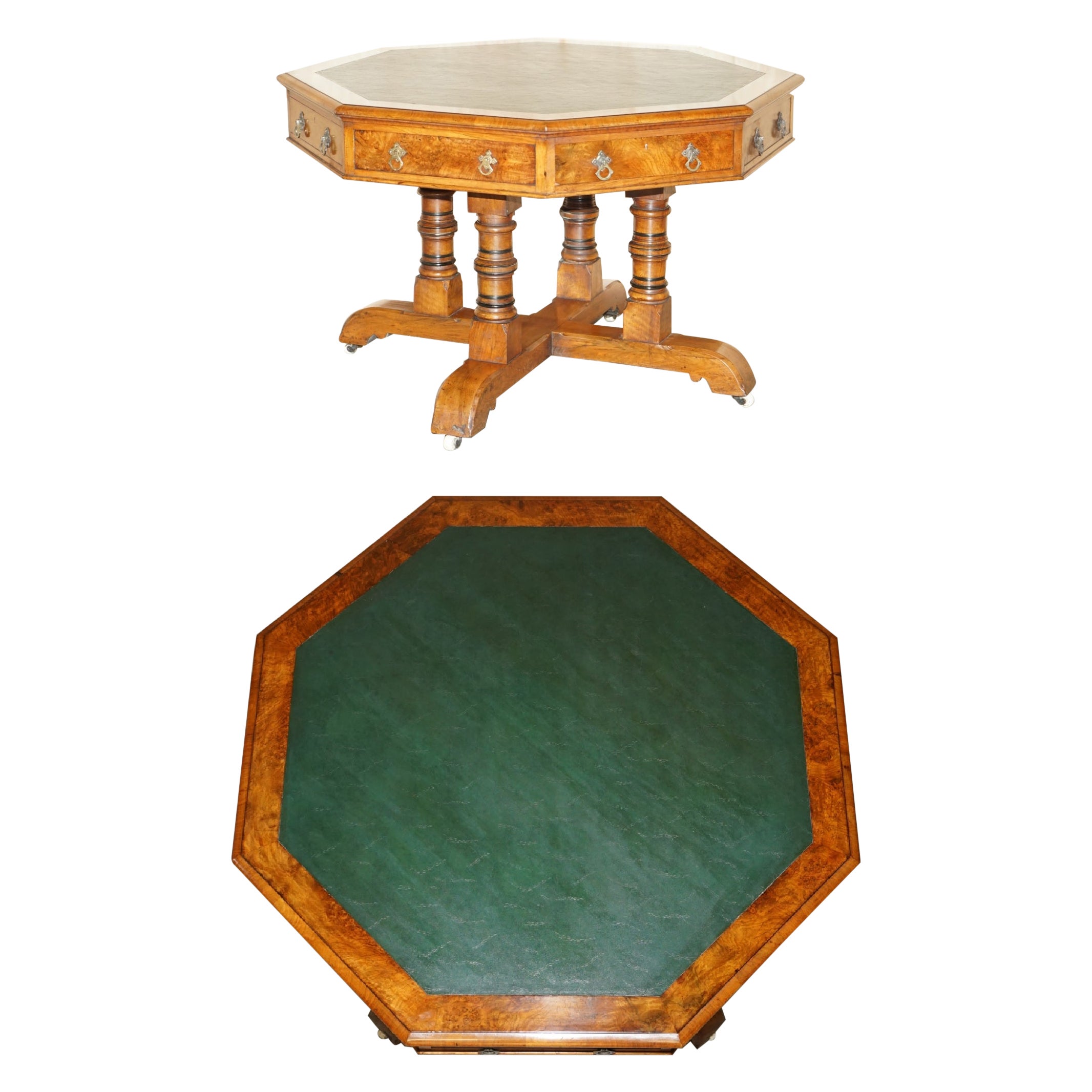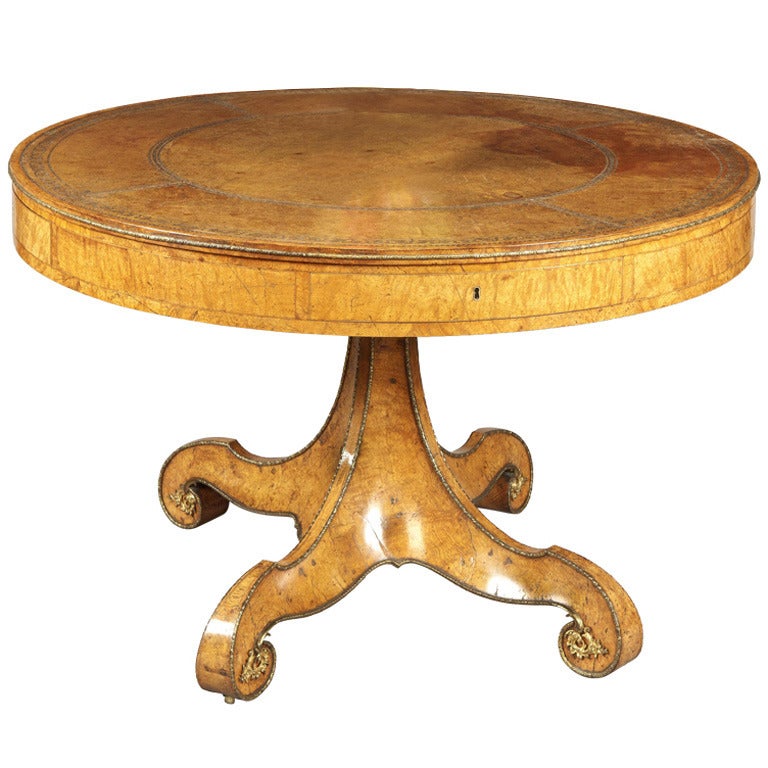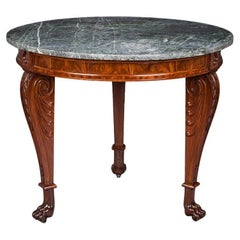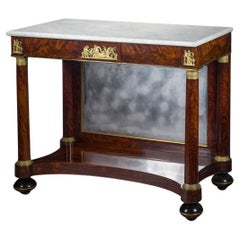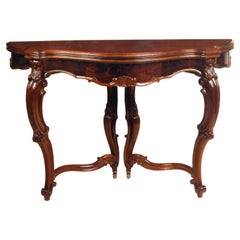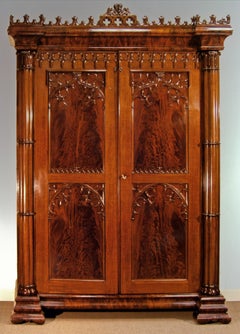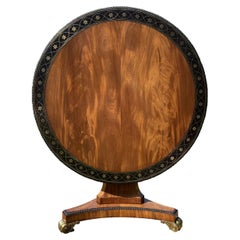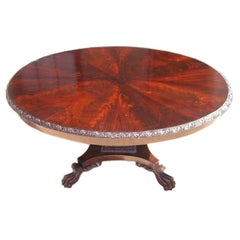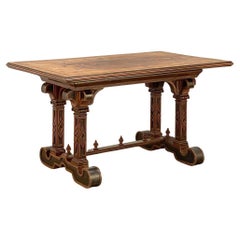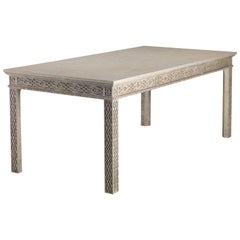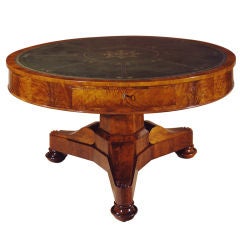
Library Table
View Similar Items
Want more images or videos?
Request additional images or videos from the seller
1 of 3
Library Table
About the Item
- Dimensions:Height: 30.25 in (76.84 cm)Diameter: 54.13 in (137.5 cm)
- Materials and Techniques:Baize,Brass,Chestnut,Iron,Leather,Mahogany,Walnut
- Place of Origin:United States
- Period:19th Century
- Date of Manufacture:about 1830
- Condition:
- Seller Location:New York, NY
- Reference Number:Seller: FAPG 16861D1stDibs: U110921903232
About the Seller
No Reviews Yet
Recognized Seller
These prestigious sellers are industry leaders and represent the highest echelon for item quality and design.
Established in 1952
1stDibs seller since 2010
Associations
Art Dealers Association of America
Authenticity Guarantee
In the unlikely event there’s an issue with an item’s authenticity, contact us within 1 year for a full refund. DetailsMoney-Back Guarantee
If your item is not as described, is damaged in transit, or does not arrive, contact us within 7 days for a full refund. Details24-Hour Cancellation
You have a 24-hour grace period in which to reconsider your purchase, with no questions asked.Vetted Professional Sellers
Our world-class sellers must adhere to strict standards for service and quality, maintaining the integrity of our listings.Price-Match Guarantee
If you find that a seller listed the same item for a lower price elsewhere, we’ll match it.Trusted Global Delivery
Our best-in-class carrier network provides specialized shipping options worldwide, including custom delivery.More From This Seller
View AllCenter Table with Scroll Legs, Paw Feet and Marble Tops
By Thomas Seymour
Located in New York, NY
Center Table, about 1818–20
Attributed to Thomas Seymour (1771–1848), working either for James Barker or for Isaac Vose & Son, with Thomas Wightman (1759...
Category
Antique 1810s American American Classical Center Tables
Materials
Mahogany, Wood
Pier Table
Located in New York, NY
One of the signature forms of the Neo-Classical period, the pier (or console) table received its name from its typical use against the wall, or pier, between two windows. Pier tables...
Category
Antique 1810s American Neoclassical Tables
Materials
Marble, Brass, Bronze, Lead
$65,000
Card Table in the Rococo Taste
By Charles A. Baudoine
Located in New York, NY
RECORDED: cf. Anna Tobin D’Ambrosio, ed., Masterpieces of American Furniture from the Munson-Williams-Proctor Institute (Syracuse University Press, Utica, New York, 1999), pp. 85, 86, 87 illus. the Munson-Williams-Proctor tables // cf. The Metropolitan Museum of Art, New York, 19th Century America–Furniture and Other Decorative Arts (1970), exhib. cat., [n.p.] no.133
This table is identical to a pair of card tables bearing the stenciled label of Charles A. Baudouine of 335 Broadway, New York, which were acquired by James and Helen Munson Williams of Utica, New York, in May 1852 for their home, Fountain Elms, which is where they remain today as part of the Munson-Williams-Proctor Art Institute collection. The Williams tables were billed as “1 Rosewood Multiform Table” at $160 for the pair, and they were indeed “multiform” in that they could be used separately and folded as a pair of console tables, opened as a pair of card tables, or joined together as a center table. The present table varies essentially in the fact that it does not include the mechanism that would have allowed it to be attached to another to form a center table.
Of French descent, Baudouine was born in New York in 1808. He made his debut as a cabinetmaker in the New York directory of 1829/30, where he is listed at 508 Pearl Street. By 1839/40 he relocated to Broadway, where he remained in business at various addresses until about 1854. A sense of the scale of Baudouine’s operation is given by German immigrant cabinetmaker Ernest Hagen...
Category
Antique Mid-19th Century North American Rococo Revival Card Tables and T...
Materials
Wood, Rosewood
Gothic Armoire
Located in New York, NY
FAPG 19959D/2
Gothic Revival armoire
New York, about 1835-1840
Mahogany, with brass hardware
Measure: 104 in. high, 73 in. wide, 30 in. deep
Exhibited: Hirschl & Adler Galleries, New York, 2011–12, The World of Duncan Phyfe: The Arts of New York, 1800–1847, p. 89 no. 45 illus. 89
Ex coll.: Private collection (probably R. H. Selstadt, Big Stone Gap, Virginia)
Although no specific pieces of Gothic furniture documented as by Duncan Phyfe have come to light, there is considerable evidence that he, like various of his contemporaries in New York, embraced the Gothic style. For example, the catalogue of the Halliday & Jenkins auction sale of the contents of Phyfe’s furniture ware rooms, which was held on site at 192 and 194 Fulton Street, New York, on April 16 and 17, 1847, included a “mahogany centre table Gothic gilt pillar and Egyptian marble top” (Halliday & Jenkins, p. 3 no. 63); “12 mahogany Gothic chairs...
Category
Antique 19th Century American Gothic Revival Wardrobes and Armoires
Materials
Brass
$125,000
Fan-Carved Wood Mantel in the Federal Taste
Located in New York, NY
New York,
Fan-carved mantel in the Federal taste, circa 1812
Pine
Measures: 66 1/4 in. high, 90 3/8 in. wide, 13 1/4 in. deep
Within the genre of carved rather than plasterwork mantels of the Federal Period, no example that has come to light is more perfectly designed or more carefully wrought than the present one, which is an amazing symphony of fans, urns, beads, and other Neo-Classical devices, all ultimately influenced by the plasterwork designs of the English architects Robert (1728–1792) and James (1732–1794) Adam.
Of a type that proliferated in the area bounded by the northern New Jersey counties of Bergen and Passaic, the Hudson Valley, and western Long Island, the mantel is representative of work that flourished in the first couple of decades of the 19th century. While most of the woodwork of this style that has survived is found in interiors, various examples of exterior doors and other trim have been noted, but most examples have disappeared as a result, variously, of natural deterioration and purposeful demolition in anticipation of development.
Although considerably larger in scale and more elaborate in ornament than a mantel that has been in the collection of the Brooklyn Museum since 1944 (acc. no. 44.55; photograph in Hirschl & Adler archives), the present mantel is so close in style and conception to that example that it likely originated in the same house.
The Brooklyn mantel is documented as having been removed from a house built by Judge Isaac Terhune (1762–1837), an eminent lawyer and judge. The house was situated on King’s Highway, at the corner of Mansfield Place, at the edge of South Greenfield, a village in northern Gravesend, Brooklyn. A photograph of the house, taken by the German e´migre´ photographer, Eugene Armbruster (1865–1933), is in the collection of the New-York Historical Society.
Terhune is ultimately descended from the Dutch-Huguenot e´migre´ Albert Albertson Terhunen, who died in Flatlands, Brooklyn, in 1685.The family eventually spread out through New Amsterdam, Long Island, and Bergen County, New Jersey. Terhune’s great-grandson, also Albert (1715–1806), left a sizable estate to his six surviving children, including his second child and second son, Isaac.
Judge Terhune lived in the house until his death in 1837, at which time, according to an article in The New York Times for November 27, 1910, he, having died without issue, “left the White Frame Mansion with its exquisitely carved doorway, beautiful mantels, and other interior adornments to his brother John” (Part Six, p. 11).
The article continues:
After the latter’s death, the house and its estate of about 70 acres passed through several owners, eventually being purchased in 1853 by Benjamin G. Hitchings [1813–1893].
The house next passed to Benjamin’s son, Hector, who had been born in the house, and then lived there for 25 years. He sold it in 1910 in partial payment for a Manhattan apartment house. After thus having been sold to a real estate developer, the Hitchings property was subdivided into Hitchings Homestead. The house survived until about 1928, at which time it was razed and a Deco-style apartment house with the address 2301 Kings Highway was constructed on the site and occupied in 1935.
By 1910, the fate of the house, in an area of Brooklyn that was being rapidly developed, was becoming obvious. The Times article reported:
The house has been well kept up, but fearing lest the hand of time or vandals might deal harshly with some of its choice bits of carving, Mr. Hitchings removed a few years ago a few beautifully carved wood mantels...
Category
Antique 1810s American Neoclassical Fireplaces and Mantels
Materials
Wood
Butler's Desk and Etagére, New York, Possibly Duncan Phyfe
By Duncan Phyfe
Located in New York, NY
Butler’s Desk and Etagére, circa 1825
New York, possibly by Duncan Phyfe
Mahogany (secondary woods: mahogany, pine, poplar), with ormolu mounts, marble,...
Category
Antique 1820s American Neoclassical Cabinets
Materials
Mahogany
You May Also Like
Fine Regency Mahogany Library Centre Table
Located in Lymington, GB
A fine Regency-period tilt-top brass inlaid mahogany and calamander library center table.
Raised on a concave-sided triform base, with well-modelled cast-brass scrolling feet.
Also referred to as a monopodium (table).
All in excellent condition, well figured, and of very good rich color.
Typical of designs by Thomas Hope (1769 - 1831).
This form of antique table is also associated with work by George Bullock (1777 - 1818) and George Oakley (circa 1765 - 1841).
Refs:
A similar table with a leather insert, in the manner of Thomas Hope, circa 1800 - 1805, was sold in London for £39,650 - December 2010.
This early 19th century table is reminiscent of the ‘Grecian’ style that the pioneering collector and designer Thomas Hope (1769-1831) popularized in Britain with the publication of ‘Household Furniture and Interior Decoration’ in 1807.
Thos. Hope (banker, born 1769, d. 1831)
The furniture manufacturer George Oakley (circa 1765-1841) was greatly influenced by Hope’s designs, and produced fashionable furniture in this style, using brass and star inlays similar to our table on offer. The firm’s designs and craftsmanship earned them royal patronage, and Oakley worked for the Prince Regent at Carlton House, as well as supplying furniture and upholstery for The Mansion House and The Bank of England. His work for the Cheere family - of Papworth Hall, Cambridgeshire, UK - is well documented.
The reference to Geo. Oakley relates to a known table of this pattern in calamander wood and brass marquetry of starred-ribbon guilloche, which corresponds to the brass marquetry in a table supplied by Oakley in 1810 to Papworth Hall.
Literature:
Parker, R. 'History of Papworth Everard...
Category
Antique Early 1800s English Regency Center Tables
Materials
Mahogany
American Mahogany Oval Library Table. Circa 1820
Located in Charleston, SC
American mahogany oval library table with carved acanthus leaf pedestal and lions paw feet. Attributed to Anthony Quervelle. Early 19th Century.
Category
Antique 19th Century American American Classical Center Tables
Materials
Mahogany
19th Century Italian Neogothic Inlaid Library Table ~ Center Table
Located in Dallas, TX
19th century Italian Neogothic Inlaid Library Table ~ Center table is an unusual example of fine craftsmanship specifically prepared for an afflue...
Category
Antique Late 19th Century Italian Gothic Revival Center Tables
Materials
Fruitwood, Maple, Walnut
$3,824 Sale Price
20% Off
Blind Fret Library Table in the Chippendale manner
By Thomas Chippendale
Located in Sturminster Marshall, Dorset
A fine Thomas Chippendale inspired blind fret library table with three concealed drawers to the frieze on both sides. Finished in an aged paint stone finish...
Category
2010s English George III Tables
Materials
Mahogany
$12,997 / item
Minimalist Modern Lacquered Library Table in Ebony on Oak
Located in Los Angeles, CA
Martin and Brockett's Library Table is a chic work horse. Stripped of unnecessary details, its minimalist design makes this table functional for sober book storage...
Category
2010s American Center Tables
Materials
Wood, Lacquer
Børge Mogensen Console / Library Table by Erhard Rasmussen in Denmark
By Børge Mogensen
Located in Limhamn, Skåne län
Very rare console / library table designed by Børge Mogensen. Produced by Erhard Rasmussen in Denmark.
Category
Vintage 1940s Danish Scandinavian Modern Tables
Materials
Cherry, Pine
